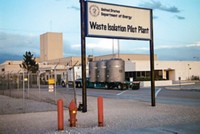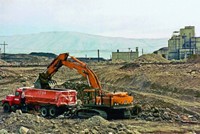Advertisement
Grab your lab coat. Let's get started
Welcome!
Welcome!
Create an account below to get 6 C&EN articles per month, receive newsletters and more - all free.
It seems this is your first time logging in online. Please enter the following information to continue.
As an ACS member you automatically get access to this site. All we need is few more details to create your reading experience.
Not you? Sign in with a different account.
Not you? Sign in with a different account.
ERROR 1
ERROR 1
ERROR 2
ERROR 2
ERROR 2
ERROR 2
ERROR 2
Password and Confirm password must match.
If you have an ACS member number, please enter it here so we can link this account to your membership. (optional)
ERROR 2
ACS values your privacy. By submitting your information, you are gaining access to C&EN and subscribing to our weekly newsletter. We use the information you provide to make your reading experience better, and we will never sell your data to third party members.
Business
A Shrinking Weapons Complex
by Jeff Johnson
January 12, 2009
| A version of this story appeared in
Volume 87, Issue 2
The Department of Energy intends to cut the workforce and the physical size of its nuclear weapons complex by 20 to 30% over the next 20 years. No facility now operating will be closed, but the focus of these facilities and their size will be reduced.
The National Nuclear Security Administration (NNSA), a semiautonomous part of DOE that runs the weapons complex, says its goal is to transform the facility by removing old buildings, eliminating some staff, consolidating similar operations, and changing the complex into a "sleek, modern science and manufacturing center."
Currently, the weapons complex consists of eight sites: two weapons design labs (Los Alamos and Lawrence Livermore National Laboratories); a weapons engineering lab (Sandia National Laboratories); a weapons assembly/disassembly facility (Pantex plant, in Texas); a nonnuclear manufacturing site (Kansas City plant); a tritium production facility (Savannah River Site, in South Carolina); a uranium components production site (Y-12 plant, in Tennessee); and an explosives testing and R&D facility (Nevada Test Site).
NNSA has an annual budget of about $9 billion, which includes $6.3 billion for weapons and another $1.5 billion for nuclear nonproliferation activities. Most of the remainder goes to security and administrative activities.
In all, about $15 billion of DOE's $24 billion annual budget supports nuclear-weapons-related work. About one-third of this $15 billion is spent each year to clean up the environmental degradation from weapons manufacturing.
At its zenith, the weapons complex consisted of dozens of industrial facilities and labs across the country, including some 16 major facilities and huge reservations of land in California, Colorado, Florida, Idaho, Missouri, New Mexico, Nevada, Ohio, South Carolina, Tennessee, and Washington.




Join the conversation
Contact the reporter
Submit a Letter to the Editor for publication
Engage with us on Twitter